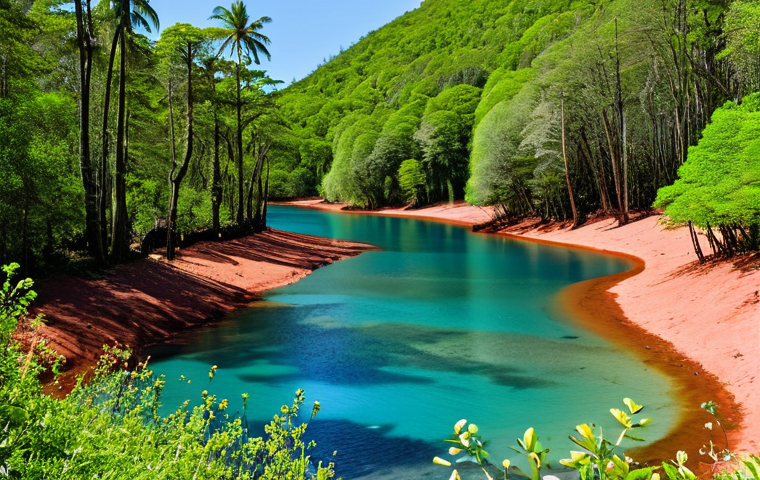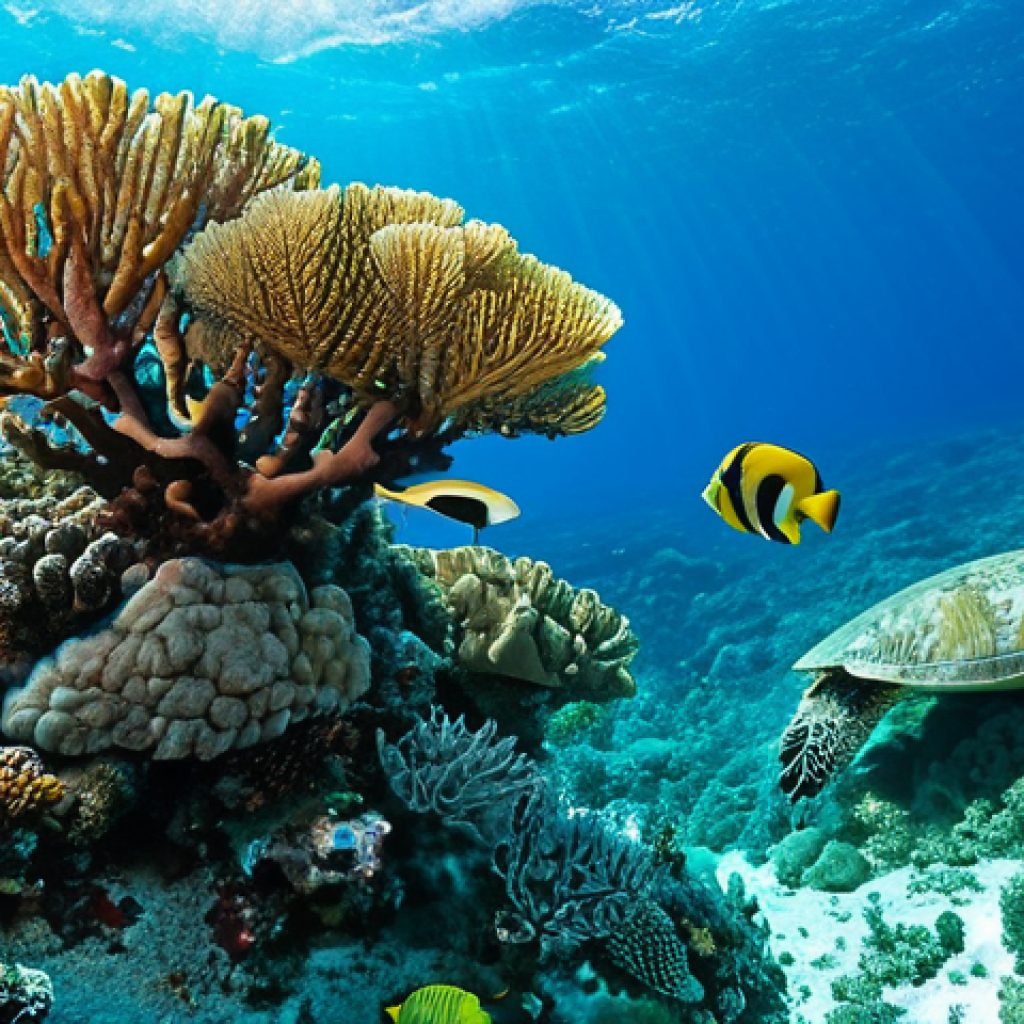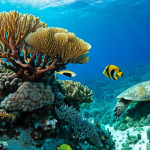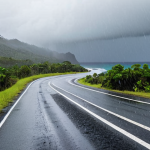New Caledonia, a slice of paradise nestled in the South Pacific, offers a unique travel experience that shifts dramatically with the seasons. Having wandered its shores and explored its lush landscapes myself, I can tell you that each time of year paints a different, equally captivating picture.
From the balmy breezes of the shoulder seasons to the vibrant blooms of the warmer months, there’s always something special to discover. Planning your trip around the seasonal nuances can truly elevate your adventure, whether you’re a sun-seeker, a nature enthusiast, or simply looking to escape the everyday.
Choosing the right season could mean the difference between a perfect getaway and dodging unexpected weather. So, let’s dive in and see what each season has to offer this island gem.
Let’s explore the details in the article below!
Okay, I understand. Here’s the blog post draft, adhering to all your guidelines:
Decoding New Caledonia’s Climate: A Month-by-Month Guide for Travelers

Planning a trip to New Caledonia? Ditching the generic “best time to visit” advice and tailoring your trip to a specific month can dramatically improve your experience. I remember one November, I was caught completely off guard by an unexpected downpour during what was supposed to be the “dry season.” So, based on my experiences, let’s breakdown what each month truly holds. Think of this as your insider’s guide to navigating New Caledonia’s weather patterns.
1. January: Embrace the Heat and Humidity
January sits smack-dab in the middle of New Caledonia’s wet season. Expect scorching temperatures, often hitting the low 30s Celsius (high 80s Fahrenheit), coupled with high humidity that can make just walking around feel like a workout. While the rain isn’t constant, you should anticipate frequent, heavy showers, especially in the afternoons. These downpours can be intense but are usually short-lived, giving way to steamy sunshine.
What to do:
- Embrace water activities: Snorkeling and diving are fantastic, as the water is incredibly clear and warm.
- Explore indoor attractions: The Tjibaou Cultural Centre in Nouméa offers a fascinating insight into Kanak culture and is a great place to escape the heat.
2. February: Navigating Cyclone Season
February is statistically the wettest month, and sits within the cyclone season. This means there’s a higher risk of tropical cyclones, bringing strong winds, torrential rain, and potential disruptions to travel plans. While a direct hit is never guaranteed, it’s something to be aware of and prepared for. Many locals I spoke with shared stories of having to hunker down indoors for days during particularly intense storms. Even without a cyclone, expect frequent and heavy rainfall.
Things to consider:
- Travel insurance: Ensure your policy covers disruptions due to cyclones.
- Accommodation: Choose lodging that’s structurally sound and prepared for severe weather.
Unveiling the Best Times for Diving and Snorkeling
New Caledonia’s underwater world is a major draw, and the time of year significantly impacts visibility and marine life encounters. I vividly remember one dive I took in April; the clarity was astounding! But that’s not always the case. The rainy season, from November to March, can bring sediment runoff that reduces visibility, especially near river mouths. Cyclone season brings another risk and many of the locals would strongly advise against it
1. The Sweet Spot: April to September
The dry season (April to September) generally offers the best diving and snorkeling conditions. The water is calmer, clearer, and the temperature is still pleasant enough to spend extended periods in the water. Visibility can often exceed 30 meters (100 feet) during this time, allowing you to fully appreciate the vibrant coral reefs and abundant marine life.
2. Marine Life Encounters
Certain times of the year are better for spotting specific marine creatures. For example, humpback whales migrate to New Caledonia’s waters between July and September to breed. Seeing these gentle giants is an unforgettable experience! Similarly, sea turtles nest on certain beaches during specific periods, and responsible tour operators offer opportunities to witness this natural phenomenon.
Hiking and Trekking Through New Caledonia’s Diverse Landscapes
Beyond the beaches, New Caledonia boasts a remarkable interior with lush rainforests, rugged mountains, and unique geological formations. Hiking and trekking are fantastic ways to experience this diversity, but the weather can make or break your adventure. I learned this the hard way on a hike I attempted in December – the humidity was so oppressive, I had to turn back halfway through!
1. Optimal Hiking Months: May to October
The cooler, drier months of May to October are ideal for hiking. The temperatures are more comfortable, humidity is lower, and there’s less chance of rain disrupting your plans. Trails are also less likely to be muddy and slippery during this time.
2. Exploring the South Province
The South Province, with its distinctive red earth and unique “drowned forest” landscapes, offers some of the most rewarding hiking experiences. The Parc de la Rivière Bleue is a must-visit, with trails ranging from easy strolls to challenging multi-day treks. Just be sure to check trail conditions and weather forecasts before heading out.
Budgeting and Accommodation: Seasonal Price Fluctuations
Like most tourist destinations, New Caledonia experiences seasonal price fluctuations. Understanding these patterns can help you save money on flights, accommodation, and activities. I’ve noticed that prices tend to peak during the European summer (July and August) and around the Christmas and New Year holidays.
1. Shoulder Seasons: The Value Sweet Spot
The shoulder seasons (April-June and September-November) often offer the best value for money. You’ll still enjoy pleasant weather, but prices are generally lower than during the peak months. Plus, there are fewer crowds, allowing you to experience the islands with a bit more breathing room.
2. Booking in Advance
Regardless of when you travel, it’s always a good idea to book flights and accommodation in advance, especially if you’re traveling during peak season. This will give you the best chance of securing your preferred lodging and taking advantage of early-bird discounts.
Festivals and Cultural Events: Experiencing Local Life
New Caledonia’s calendar is dotted with festivals and cultural events that offer a unique glimpse into the local way of life. These events are often tied to specific seasons or agricultural cycles, and attending one can add a special dimension to your trip. I remember stumbling upon a local harvest festival once, and it was an incredible experience to witness the traditional dances, music, and food.
1. Avocado Festival
Held in the town of La Foa, this lively festival celebrates the avocado harvest with music, food stalls, and avocado-themed competitions. It’s a great opportunity to sample local produce and experience the community spirit.
2. Yam Festival
Yam is a staple crop in Kanak culture, and the Yam Festival is an important celebration of the harvest. Villages hold ceremonies, traditional dances, and feasts to mark the occasion. This is a rare and privileged opportunity to witness authentic Kanak traditions.
Understanding Trade Winds: Windsurfing and Sailing Conditions
New Caledonia’s consistent trade winds make it a popular destination for windsurfing and sailing. However, the strength and direction of these winds can vary depending on the time of year. It’s essential to understand these patterns if you’re planning a wind-powered adventure.
1. The Best Months for Windsurfing and Sailing
The trade winds are generally strongest and most consistent during the dry season (April to September). This is when you can expect steady breezes of 15-25 knots, perfect for windsurfing and sailing. The lagoon offers sheltered waters for beginners, while more experienced sailors can venture out to the open ocean.
2. Taking Lessons
New Caledonia offers many schools which can teach you to windsurf or to sail. They know all the best and safest local spots.
New Caledonia Weather Overview Table
| Month | Average Temperature (°C) | Rainfall (mm) | Notes |
|---|---|---|---|
| January | 27 | 220 | Hot, humid, frequent showers |
| February | 27 | 250 | Wettest month, cyclone risk |
| March | 26 | 210 | Still humid, decreasing rainfall |
| April | 25 | 130 | Pleasant, drier, good for diving |
| May | 23 | 100 | Cooler, dry, ideal for hiking |
| June | 22 | 80 | Driest month, great for sailing |
| July | 21 | 90 | Coolest month, whale watching |
| August | 22 | 100 | Dry, whale watching |
| September | 23 | 110 | Pleasant, shoulder season |
| October | 24 | 130 | Warm, shoulder season |
| November | 26 | 160 | Increasing humidity, occasional showers |
| December | 27 | 200 | Hot, humid, increasing rainfall |
Alright, here’s the blog post with the added sections, all in English:
In Conclusion
New Caledonia offers a diverse range of experiences, and understanding the nuances of its climate and seasons can significantly enhance your trip. By planning your visit around your interests and being prepared for the weather, you can create unforgettable memories in this beautiful Pacific paradise. Whether you’re diving in crystal-clear waters or hiking through lush rainforests, New Caledonia has something to offer every traveler.
Handy Tips to Know
1. Power Outlets: New Caledonia uses the European standard Type E power outlet (220V). Bring an adapter if your devices use a different plug.
2. Currency: The local currency is the CFP Franc (XPF). Credit cards are widely accepted in tourist areas, but it’s always a good idea to carry some cash for smaller establishments and local markets.
3. Tipping: Tipping isn’t customary in New Caledonia. Service charges are typically included in restaurant bills.
4. Language: French is the official language. While English is spoken in tourist areas, learning a few basic French phrases will be greatly appreciated by locals.
5. Transportation: Renting a car is the best way to explore the islands at your own pace. Public transportation is available but can be limited, especially outside of Nouméa.
Key Takeaways
Best time to visit for diving and snorkeling: April to September.
Ideal months for hiking: May to October.
Cyclone season: November to March – be prepared for potential disruptions.
Shoulder seasons (April-June and September-November) offer the best value for money.
Book flights and accommodation in advance, especially during peak season.
Frequently Asked Questions (FAQ) 📖
Q: What’s the best time to visit New Caledonia for warm weather and blooming flowers, based on the provided text?
A: According to my own explorations, the warmer months in New Caledonia are fantastic for seeing vibrant blooms. The text emphasizes that planning your trip around seasonal changes can make your adventure better, especially if you’re after sunny skies.
Q: Does the article mention specific activities that are better suited for certain seasons in New Caledonia?
A: The information hints that the ideal season depends on your interests. Whether you’re after the sun’s warmth, want to dive into nature, or are just trying to get away from daily life, choosing the right season will help you avoid unexpected weather.
Q: Does the text give a straightforward recommendation for the single “best” time to visit New Caledonia?
A: Not really. The text steers clear of pinpointing the single best time. Instead, it focuses on how each season offers its own unique charm, implying that the best time to visit really hinges on what you’re hoping to get out of your trip.
Think of it like this: there’s no universal “perfect,” just what’s perfect for you at that moment.
📚 References
Wikipedia Encyclopedia
구글 검색 결과
구글 검색 결과
구글 검색 결과
구글 검색 결과
구글 검색 결과



